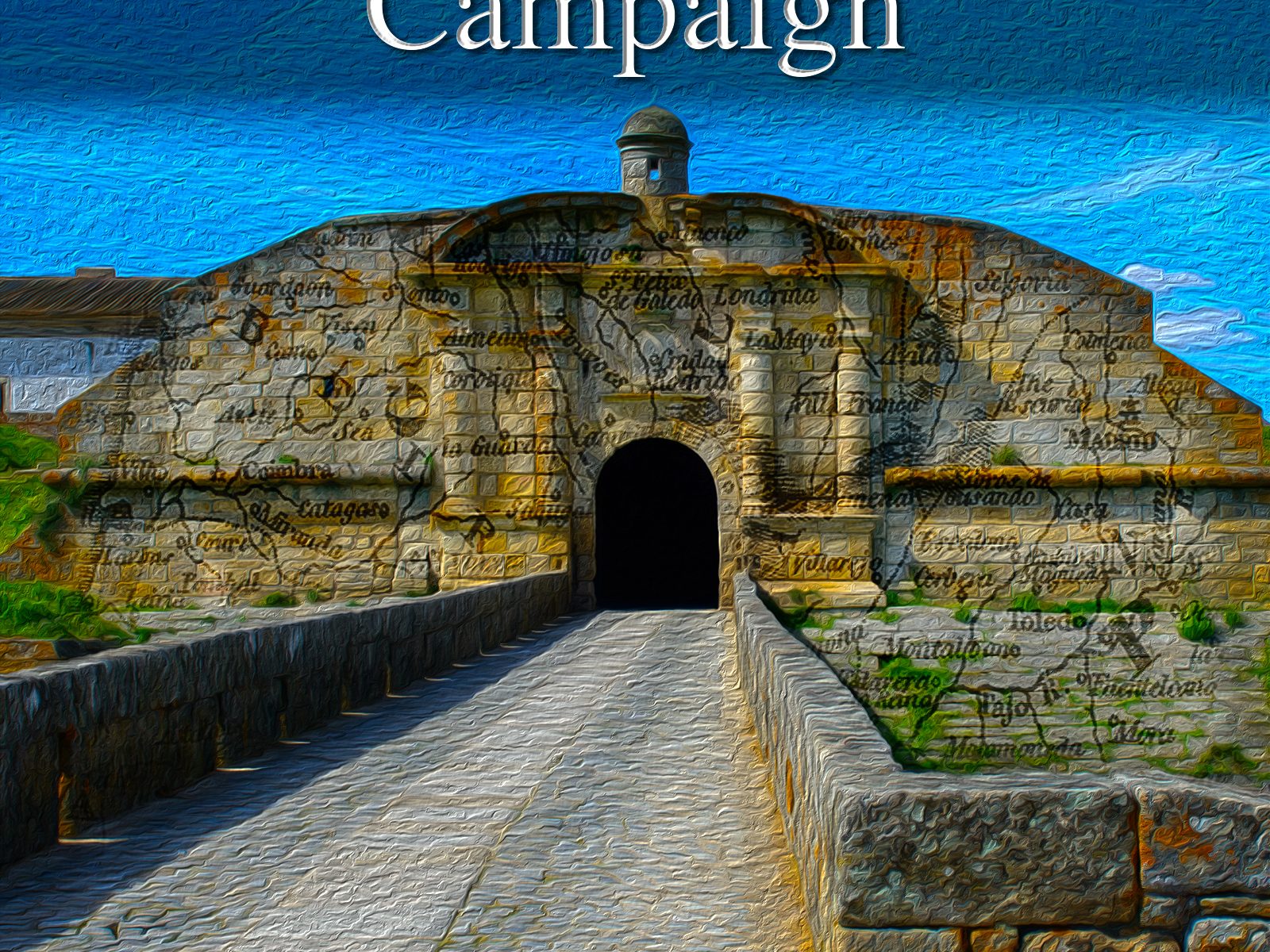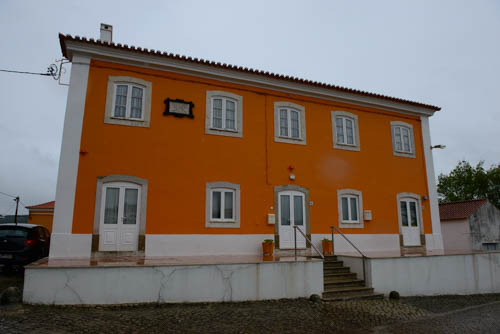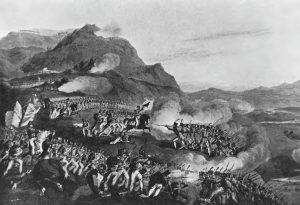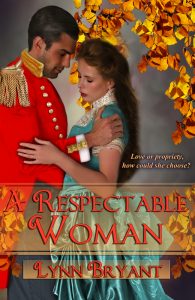
A Respectable Woman was the first full novel I wrote and the first to be published. It is set outside my normal time period of the Napoleonic wars, in the Victorian era and tells the story of Philippa Maclay, a young woman who finds herself orphaned and penniless in an era which was unforgiving to a middle class woman who needed to earn a living.
Much has been written about the plight of women in the days when there were very few respectable occupations open to a girl other than marriage. Marriage is not an option for Philippa when she loses her father and her home after an attack by a slave band on the African mission station where she grew up. Middle class women left without means of support could become a governess or a companion and maintain their respectability but they were vulnerable to losing their jobs. They were also expected to behave with the utmost circumspection and any hint of immorality was likely to see them turned off without a character. Women could – and did – sometimes find themselves destitute and the Victorian sex trade had it’s share of girls from good families fallen on hard times.
Those fortunate enough to keep their jobs were not always in a happy position socially. They were caught between social classes, a cut above the servants but not welcome in the drawing rooms and parlours of their employers. They were also, especially if young and inexperienced, potentially at risk from exploitation from predatory males; this has been a device of endless romantic novels.
Philippa is fortunate enough to have been offered a position teaching at a charity school in East London and has come to love the work but her temperament is not well suited to the rigid rules of society. She was not raised to be a lady and she resents the constraints placed upon her. In particular she refuses to give up her friendship with Kit Clevedon, a well-born army officer whom she met in Africa, despite knowing that it could ruin her. Kit himself has very definite ideas about Philippa, none of which include marriage, but he has come to value the friendship which is all she is willing to offer.
The school depicted in the novel is based on Raines Foundation School in East London which was my school back in the seventies, and anybody familiar with the school will recognise the location as the Arbour Square building. The running and organisation of Wentworths School is based on original material about Raines from local archives. This included Founder’s Day, a tradition celebrating the birth of Henry Raine which was still in existence when I left school in 1980.
The girls were noisier than usual, caught up in the excitement of the day, and Miss Chadwick was more lenient than she might have been. It was better, she pointed out to Miss Bentley, when she complained, that they work off some of the excitement before their visitors arrived, than during the celebrations. Morning school was cut short by an early meal of bread and cheese, and then the girls lined up, immaculate in their blue cloaks and bonnets, for the walk to the church.
Most of the dignitaries had already arrived when the school party filed into the church, and quietly took their places in the pews allotted to them. Mr Duncan began the service with a hymn and a prayer, and then various members of the Board filed up to the lectern to read, to lecture or to pray. Philippa allowed her attention to wander, and moved her eyes idly over the congregation. By now she recognised most of the Board members and their wives. One or two had brought their children with them, expensively dressed and every bit as bored as the Wentworths girls by the tedious speeches and moralising. Philippa wondered what they thought of being dragged to this event, to watch children whose lives were so far removed from their own.
Mr Wentworth sat at the front, and beside his wife sat a tall dark lady, demure in grey, who must be Lady Alverstone. On the other side of her was a tall young man in military uniform. Philippa stared in growing astonishment and horror. She could only see the back of his head, but she did not need him to turn round to recognise Kit Clevedon’s chestnut hair. What he was doing here, she could only guess. Lady Alverstone, of course. Had he not said that his mother was addicted to good works? That would explain, Philippa thought furiously, how her Ladyship had come to hear about the school.
Philippa glanced around. Tony was sitting alongside Mrs Duncan at the front. There was no way of knowing if he would make any connection between the young officer so gallantly escorting his mother, and Philippa’s supposed lover. But once he heard Kit’s name, as he surely would, he would know. Silently fuming, Philippa awaited the end of the service.
There was no conversation as the girls filed out of the church and through the churchyard to the imposing marble tomb, which marked the final resting place of Oliver Wentworth. Prayers were said, and then Mr Wentworth, Miss Chadwick, and one of the girls each stepped forward and placed a wreath on the tomb. After that, the girls formed up to be marched back to school, and the visitors meandered more slowly through the sunlit churchyard to their carriages, to be conveyed back for tea.
Philippa would have accompanied them, but Miss Chadwick, who was escorting the guests to their carriages, detained her. Miss Grafton and Miss Bentley marched off, both backs rigid with indignation at the favour shown the younger mistress, and Amelia drew Philippa forward.
“You will remember Miss Maclay, Mr Wentworth.”
“Of course I do!” Mr Wentworth said, with unusual heartiness. “I hear nothing but praise for you, Miss Maclay, from all sides. We were fortunate to find you. Miss Chadwick, allow me to introduce you to Lady Alverstone, who has been kind enough to show interest in our little school. And this is Major Clevedon, her son, who is her escort today.”
Lady Alverstone held out a friendly hand. “Miss Chadwick, I am impressed with your pupils, and can not wait to see your school.” The pleasant grey eyes moved to Philippa, and Lady Alverstone reached out her hand again. “And Miss Maclay. Although we’ve never met, I know what a debt of gratitude I owe to you.”
Speechless with embarrassment, Philippa bobbed a small curtsey and took the older woman’s hand. She was aware of the puzzlement on the faces of those around her, and although she could not see his face, she could feel Tony Marshall’s outrage behind her, as his nimble brain assimilated the facts.
Lady Alverstone turned to Mr Wentworth. “Many years ago, during his service in Africa, my son visited the mission station run by Miss Maclay’s late father. He was attacked by a lion, and wrote to tell me that only the courage and presence of mind of Miss Maclay saved his life. I shall always remember that.”
Philippa found her voice at last. “I think the Major may have exaggerated my services a little, ma’am,” she said.
“Not at all,” Kit said, holding out his hand. “As well you know, Miss Maclay. It has been a long time. Too long.”
She was obliged to take his hand. Anger lent her courage, as always. Lifting her chin she met his laughing green eyes steadily.
“Certainly, sir. And so much has happened in between.”
“Well, well, Miss Maclay!” Mr Wentworth was positively jovial now. “It seems you have been too modest. Come, come, there is no need for either of you to walk back to the school. There is space in our carriage.”
Back at the school, lessons recommenced, while the selected girls served tea in the refectory to their guests. Philippa had planned to join her class, but Miss Chadwick, quick to sense the advantage of Philippa’s connection with the Alverstone party, and wholly unaware of her young friend’s discomfort, sent a message for the monitor to take over the class, and kept Philippa with the tea party. Unsure of what Kit might say or do next, Philippa kept as quiet as possible, and was relieved when she found herself seated next to Mrs Wentworth, a pleasantly garrulous woman, who talked of the school and of her children without pausing for breath.
At the end of the meal, Philippa rose to supervise the clearing of the plates into the kitchen, and the party began to prepare for the tour of the school. Returning to take up her place with her class, she unexpectedly found Kit standing by the doorway. It would have seemed rude to pass him by without a word, so she managed a smile and murmured apology.
“Am I in disgrace?” he asked in a low, amused voice.
“How can you ask that? Even if you had warned me!”
“I’m sorry, Philippa. The opportunity seemed irresistible. And I wanted to see you here – at work.”
“Well you’re about to. I need to get to my class. When this is over, I’m going to kill you!”
He laughed and stepped aside. Philippa stepped into the hallway, and found herself face to face with Tony Marshall. It was clear that he must have heard every word of their encounter.
She saw consternation in Kit’s face. “It’s all right,” she said quickly. “He knows.”
“I see,” Kit drawled. Philippa wanted to hit him, and was sorely tempted to hit Tony, but there was no time. The party was beginning to drift towards the door.
“Don’t start anything – either of you!” she hissed, in a savage undertone. “If either one of you says just one word to jeopardise my job, I’ll illustrate my next Bible class with a live demonstration of a crucifixion!”
She marched past them and into the schoolroom. Kit gave a choke of laughter, but found no answering smile in the cold grey eyes of the doctor. On reflection, Kit supposed he did not blame him. In the eyes of Tony Marshall there could be nothing funny about Kit’s pursuit of the girl he loved.
As they joined the schoolroom party, Kit watched the other man. Even without his prior knowledge of the doctor’s feelings for Philippa, he would have sensed Marshall’s tangible hostility. Wisely, Marshall dealt with it by removing himself to the far side of the group. The party stopped at the fourth class, taught by Philippa, and Marshall’s grey eyes never left her as she took the older girls through a series of sums, corrected gently, a girl made careless by nerves, behaved to all intents and purposes, as if she were not under observation at all. Mr Simmonds then asked if he might examine the class, and Philippa gave her gracious permission, and watched as he fired a few questions at the nervous girls. They performed well, and seemed to have genuinely absorbed the lessons.
Kit looked at Philippa again. He had been speaking the truth when he said he had wanted to see her in her own setting. All their meetings had taken place in his world. Here, in the world she knew, she was quietly competent, friendly but slightly distant, at home with herself and sure in the knowledge that she was doing a good job. He could sense that the girls liked her and strove to please her. He was very aware of the close friendship that seemed to exist between herself and Miss Chadwick. And he found it slightly unnerving to realise that here, he was a fish out of water, much as she must have felt in his world.
She was wearing a new dress. It was clearly bought with work in mind, and was too plain for his taste. But the colour suited her, and she looked beautiful. He was amused to see that he was not the only man here who thought so. Both Wentworth and Simmonds were watching the teacher more than the pupils.
He was relieved when the party moved on to the next class. Now that he was here, he was not sure that it had been such a good idea to come. In his dreams, he had wanted Philippa out of here. He had thought of her as a poorly paid drudge, and had wanted to place her in luxury, with expensive clothes, and fancy servants. He had wanted her dependent upon him, available when he needed her company, her pretty face and her body for his pleasure.
It occurred to him for the first time that he was never going to have those things. When it had just been a case of her moral scruples, he had never doubted his ability to seduce her. But he realised now that he was competing against a life that she had no wish to give up. She had taken this job because she needed to, but she was doing it because she loved it. She was at peace here, and content in a way that she could never be as the pampered mistress of a rich man. And as badly as he desired her body, it surprised him to realise, that it was just as important to him, that she should be happy in her choice. If he were ever to have Philippa Maclay as his mistress, it would be on her terms and not his.
The interminable afternoon wore on, and finally the visitors were leaving, drifting slowly to their carriages, still talking, full of tea and goodwill, making complimentary remarks to Miss Chadwick. Miss Bentley and Miss Grafton sent the girls off to wash before supper, and Philippa found herself standing beside Lady Alverstone.
“I was very impressed by your lesson, Miss Maclay.”
“Thank you, ma’am. I had good material to work with.”
“The girls here are very lucky to have such dedicated teachers.” The older woman smiled and offered her hand. “I hope to have more to do with your school in the future. I will be talking to Mr Wentworth further about it, but I am sure that we can do more to help such a good cause.”
Philippa’s smile was genuine. “Thank you. I think the girls are worth it.”
Kit appeared beside her. “A very interesting afternoon, Miss Maclay. I commend you.”
“Thank you, sir.”
He said no more, and she was glad of it. There were too many confusing emotions crowding her, and she wanted time alone in her room to think and to sort out how she felt. She could never be anything other than glad to see Kit, but his presence here had unsettled her. He had invaded her world, and nothing would ever feel quite the same again.
She went through to join the girls at supper, and Miss Chadwick joined them, and made a short speech complimenting both girls and teachers on the success of the day. After supper she sent the girls to bed. Both Miss Bentley and Miss Grafton followed them shortly after, and Amelia turned to Philippa.
“Let’s go to my parlour. It’s more comfortable, and I have a nice Madeira, which is just begging to be drunk. I know Mr Wentworth would be shocked, but I think we’ve earned it, don’t you?”
“Yes,” Philippa said firmly. “Let us go immediately!”
In Amelia’s sitting room, Philippa took possession of her favourite armchair, while Amelia poured two glasses of the rich wine. She handed one to Philippa who thanked her and sipped it with a sigh.
“That is much better!” she said. “They should serve it after all such functions as this! Was it really a success, Amelia?”
“Oh yes. The Board are very impressed, and will go away and write a very favourable report of the event which will be neatly filed away in their records and never be seen again. I shall probably receive a complimentary letter, which will go the same way. Philippa – thank you. Once again, you have proved invaluable.”
“The bulk of the work was yours.”
“And the best impression came from you. Mr Wentworth was especially impressed, although I’m not sure whether that was because of your excellent teaching or your connection with the Alverstones.”
Philippa felt herself flush.
“I have no connection to the Alverstones.”
“You think not? Her Ladyship seemed eager to imply otherwise. And saving the life of the son of an Earl is certainly a way to get noticed.”
“It was hardly my thought at the time.”
“I suspect not. Can you tell me about it?”
Philippa shrugged and placed her wine glass on the table. “It was nothing extraordinary. Two English officers were on a hunting furlough, and one of them decided a night ride to the mission was a sensible idea. He was attacked by a lion. I was on my way home from the kraal of a local chief, whose son I had been treating for an injury. I had a gun with me and frightened off the animal before it did too much damage.”
“And Major Clevedon did not forget about it.”
“Apparently not.”
“He thought enough of it to tell his mother. And that could mean a lot for this school.”
“Kit isn’t a philanthropist, Amelia.”
As soon as the words were out of her mouth, Philippa could have bitten her tongue. Knowing that an attempt to retrieve her mistake would only arouse further suspicion, she took refuge behind her glass.
“Kit?” Amelia queried gently.
“Major Clevedon. Formality wasn’t great at the mission, and that’s the name he gave us. I didn’t know he was related to the Alverstones until today, although I knew his father was a peer.” She smiled and shrugged. “To be honest, that didn’t have much meaning on the mission either. He was just Kit.”
“And you haven’t seen him since?” Amelia said casually. Too casually.
Philippa sighed. “Yes. We’ve met socially once or twice.”
“You didn’t mention it.”
“I didn’t think it important. I’ve met a lot of people through my Cousin, Amelia. I ran into Kit at the theatre one evening. My party and his were slightly acquainted. And be honest, what would you have thought if I had specifically mentioned him?”
“Fair enough. Philippa, I don’t claim the right to pry into your social life. I’m glad you have one. But my feeling was that there was more to your acquaintance with Major Clevedon than met the eye. And at the moment, it is important that your reputation remains spotless.”
Philippa raised her eyebrows. “Why?”
“Because you are going to receive a summons to see the Board some time over the next week or so, and they are going to offer you the job of Deputy Superintendent of the school. And since it has taken me months to talk them into it, I don’t want anything to jeopardise their decision.”
Philippa stared at her in complete astonishment. To cover her confusion she took a gulp of wine and put the glass down on the table.
“Why me?” she said finally.
“I should have thought that was moderately obvious. You’re the only person I’ve ever employed here who was competent to do the job. You’re intelligent, a good teacher and a good manager. I want you to have the job, and there will be a salary increase. I hope you’ll accept it.”
“If it’s what you want, of course I will,” Philippa said quickly. “But it’s going to cause some resentment you know. Miss Bentley and Miss Grafton….”
“Will be furious. I know. But Miss Bentley has already given her notice. She is retiring. Miss Grafton…let us say she was never my appointment, and it would not distress me greatly if she moved on. We will advertise the post as soon as possible, and I hope your appointment will have been confirmed in time to help me with the interviews.”
“Thank you,” Philippa said. She felt oddly shaken, and slightly tearful. “I mean – thank you for your confidence in me. I won’t let you down, I promise.”
“I know that, my dear. I have total faith in your good sense, your integrity – and your discretion.” Amelia smiled faintly and leaned forward to pick up the wine bottle. “Your glass is almost empty. Have some more wine.”
Philippa held out her glass. “Thank you,” she said, more steadily. “And I still promise that I won’t let you down.”
“Philippa – just don’t let yourself down, and I’ll be happy,” Amelia said quietly. “Now tell me what you think we need to say in this advertisement.”
(From A Respectable Woman by Lynn Bryant)


 The storming of the two great Spanish border citadels of Ciudad Rodrigo and Badajoz were the first step in Wellington’s campaign of 1812. It was essential for him to hold these fortresses, known as the keys to Spain and he pushed his army to it’s limits in order to capture them, with huge loss of life and appalling loss of discipline.
The storming of the two great Spanish border citadels of Ciudad Rodrigo and Badajoz were the first step in Wellington’s campaign of 1812. It was essential for him to hold these fortresses, known as the keys to Spain and he pushed his army to it’s limits in order to capture them, with huge loss of life and appalling loss of discipline.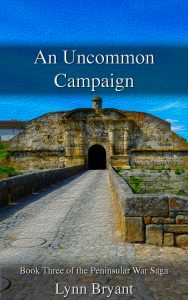





 For 300 years the people of the Anglo-Scottish Border region lived in a war zone. Invading armies caused terror, destruction and death and the ongoing conflict forged men who were expert raiders and cattle thieves, owing loyalty to none but their own clan, their own surname. We have come to know them as the Border Reivers.
For 300 years the people of the Anglo-Scottish Border region lived in a war zone. Invading armies caused terror, destruction and death and the ongoing conflict forged men who were expert raiders and cattle thieves, owing loyalty to none but their own clan, their own surname. We have come to know them as the Border Reivers.







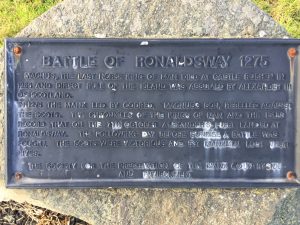 On an impromptu trip to the south of the island yesterday, I found myself reading a memorial stone to the Battle of Ronaldsway, an important event in the history of the Isle of Man which I realised I knew nothing about apart from the fact that it happened.
On an impromptu trip to the south of the island yesterday, I found myself reading a memorial stone to the Battle of Ronaldsway, an important event in the history of the Isle of Man which I realised I knew nothing about apart from the fact that it happened.

